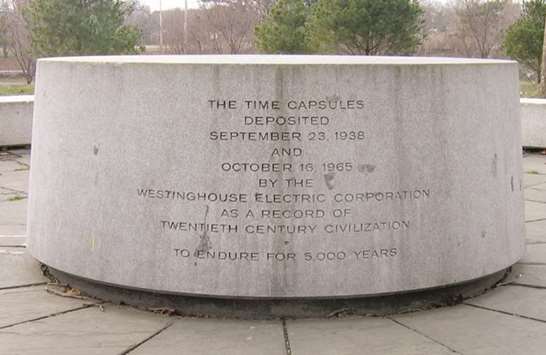We can’t say for sure if the human race has reached the pinnacle and to a final triumph over times gone by. Unfortunately, the history is not documented well enough.
Human race is always evolving, and this is our beauty. We can never say that it has reached ‘the ultimate in material and social development’. The race shall march onward to achievements splendid beyond the imagination of this day, to new worlds of wealth, power, life and happiness.
Time capsule is an audacious attempt to preserve human knowledge for posterity. It offers a fascinating peek into how past generations lived and how they wanted to be remembered. And the pageantry of unearthing these incredible ‘time machines’ is an exciting affair, a chance to see mysterious items hand-picked long ago as apposite examples of a bygone era.
Time capsules are a relatively new invention that became famous in 1930s with the burial of the Westinghouse Time Capsule at the World’s Fair.
In fact, the Westinghouse Time Capsules are two time capsules prepared by the Westinghouse Electric & Manufacturing Company. ‘Time Capsule-I’ was created for New York World’s Fair 1939 and deposited exactly eighty years back, on September 23, 1938. ‘Time Capsule-II’ was created for New York World’s Fair 1964. Buried 50 feet below Flushing Meadows–Corona Park, the site of both world’s fairs, the capsules are to be opened at the same time in the year 6939, five thousand years after the first capsule was sealed. Why New York? Well, it was believed that the metropolis will likely become a place of interest for future generations, much like Athens, Rome or Troy now.
The time capsules are bullet-shaped, measuring 90 inches in length. Time Capsule-I was made of a non-ferrous alloy called Cupaloy, and created especially for this project to resist corrosion for 5,000 years. Time Capsule-II was made of a stainless steel metal called Kromarc.
The contents of the time capsules were sealed inside an insulated, airtight, glass envelope. The interior of the glass envelope of Capsule-I was filled with nitrogen, whereas Capsule-II was filled with the inert gas, Argon.
The objects sealed away are nods to nostalgia and were selected to chronicle 20th-century life in the United States. These include a collection of seeds, metals and textiles; microfilm and newsreels; and everyday items such as a Beatles record, a bikini, a pack of Camel cigarettes and a plastic child’s cup featuring Mickey Mouse. Just 80 years later, many of objects are now obsolete, giving us an intriguing look at how quickly we outgrow our common possessions.
The Westinghouse model might have drawn inspiration from the Crypt of Civilisation, a swimming-pool-sized time capsule sealed until 8113. Its creator, Thornwell Jacobs, started building in 1936, three years before Westinghouse. But he didn’t close the room until 1940. The Guinness World Book of Records declared it ‘the first successful attempt to bury a record for any future inhabitant’ of Earth. The International Time Capsule Society estimates the world has approximately 10,000 capsules, but many of the locations remain a mystery.

THE TIME CAPSULE: Time Capsule-I was made of a non-ferrous alloy called Cupaloy, to resist corrosion for 5,000 years while Time Capsule-II was made of a stainless steel metal called Kromarc.


